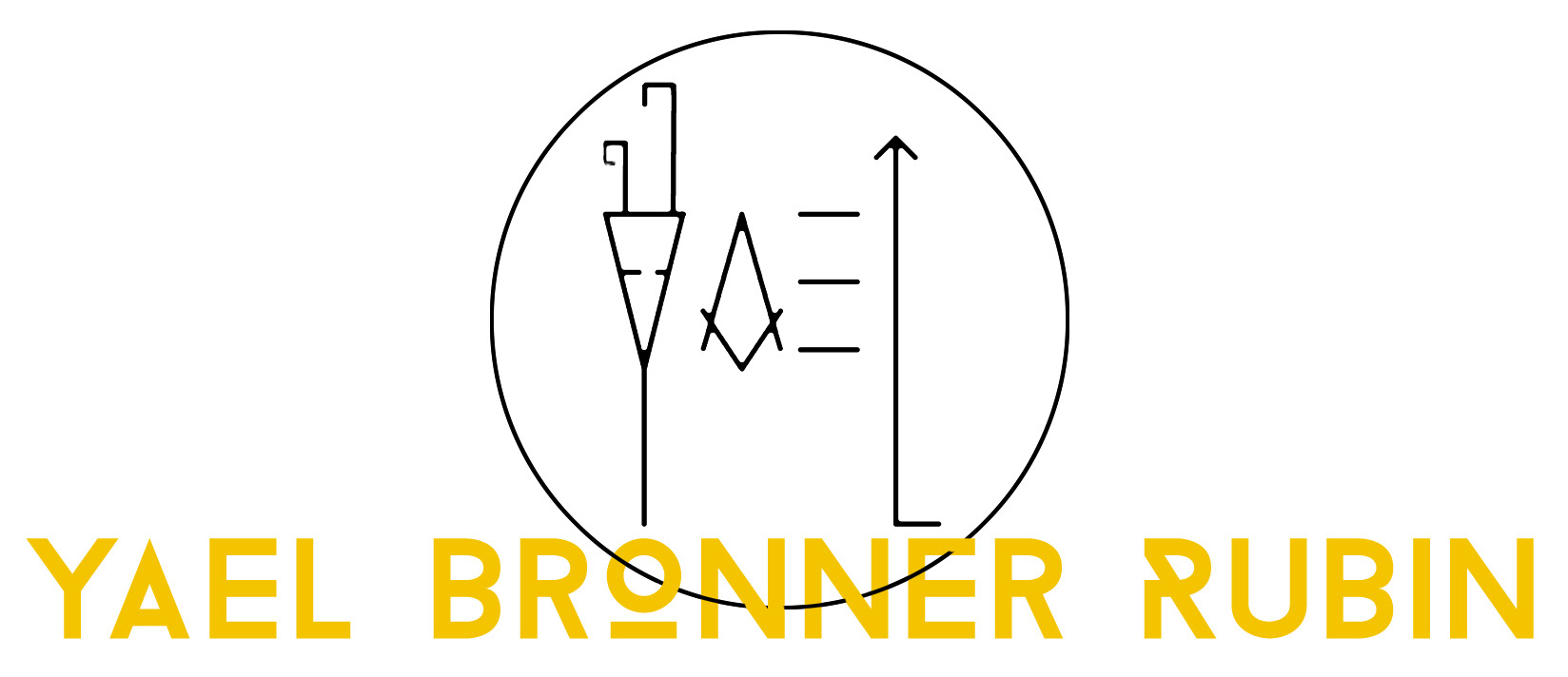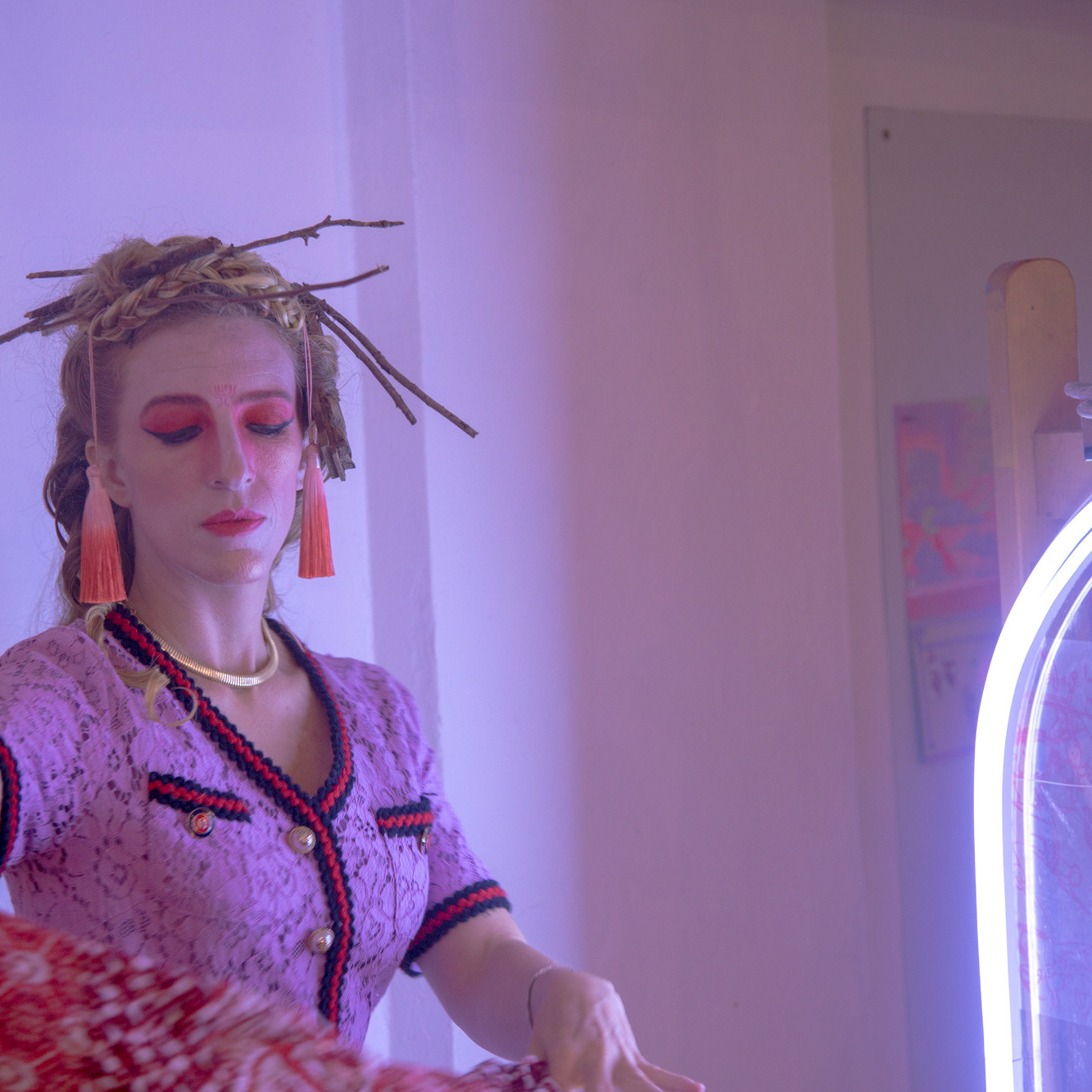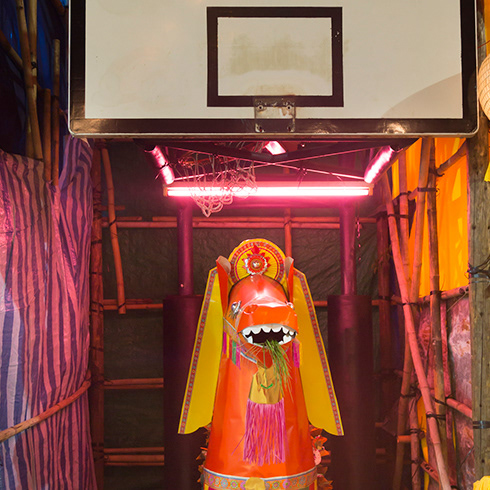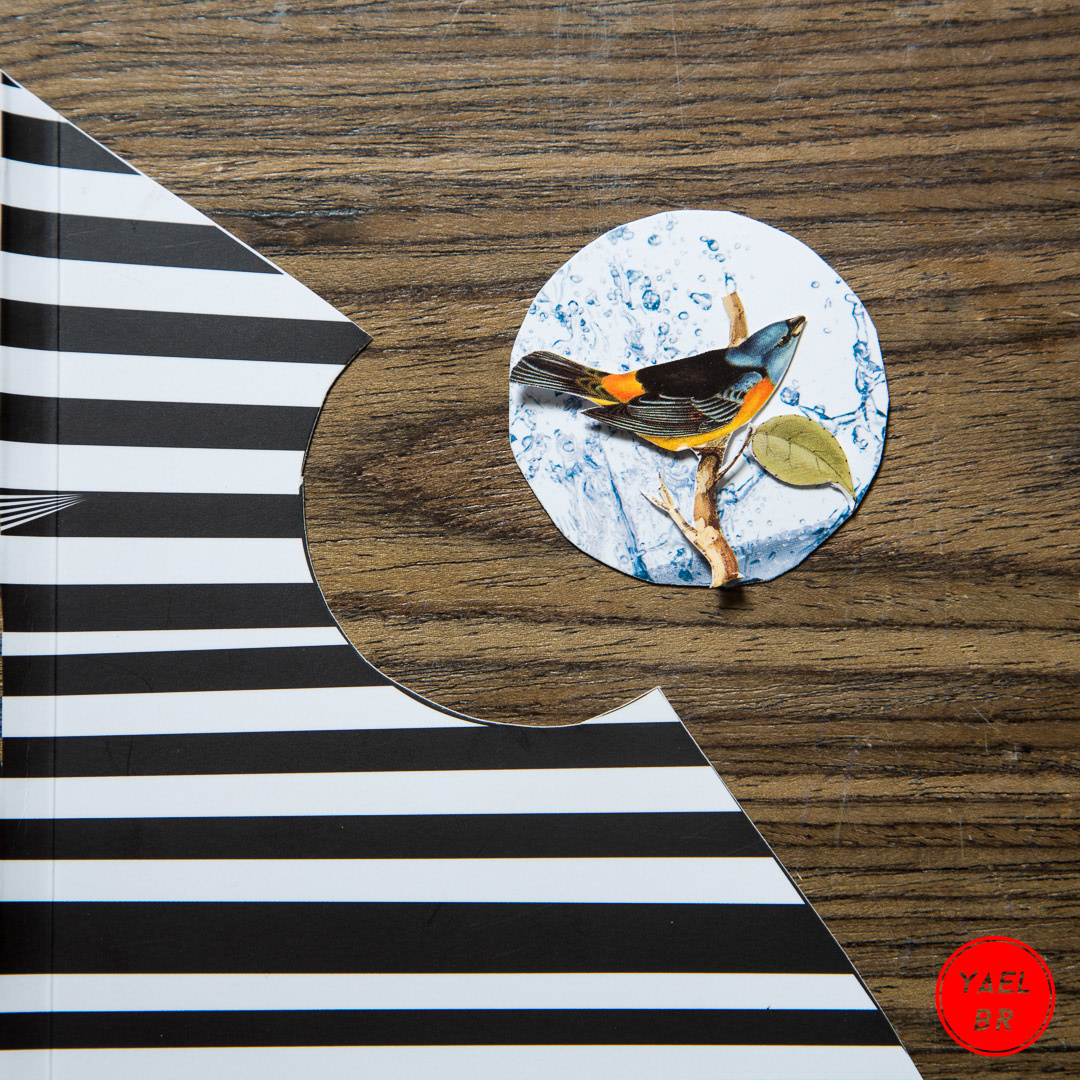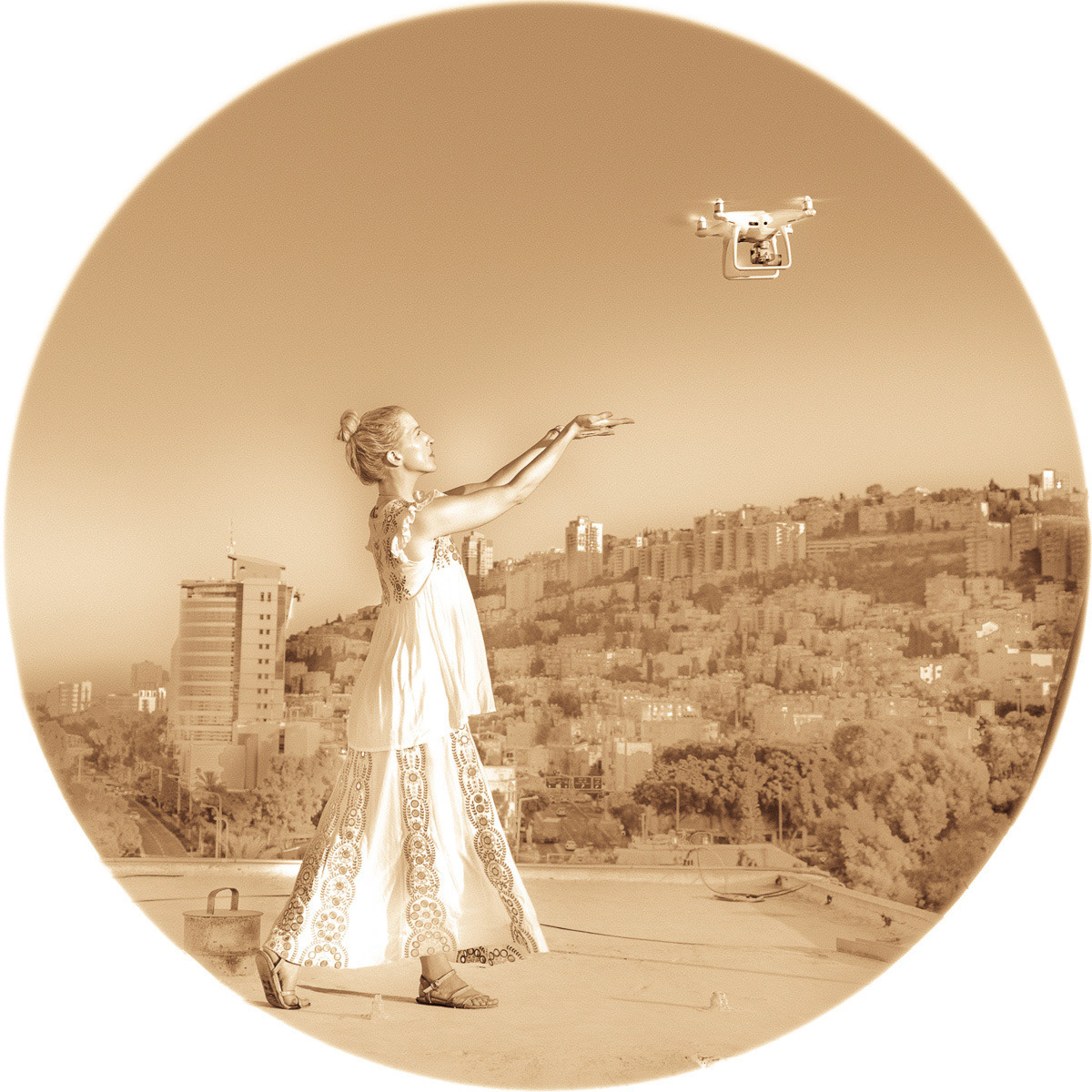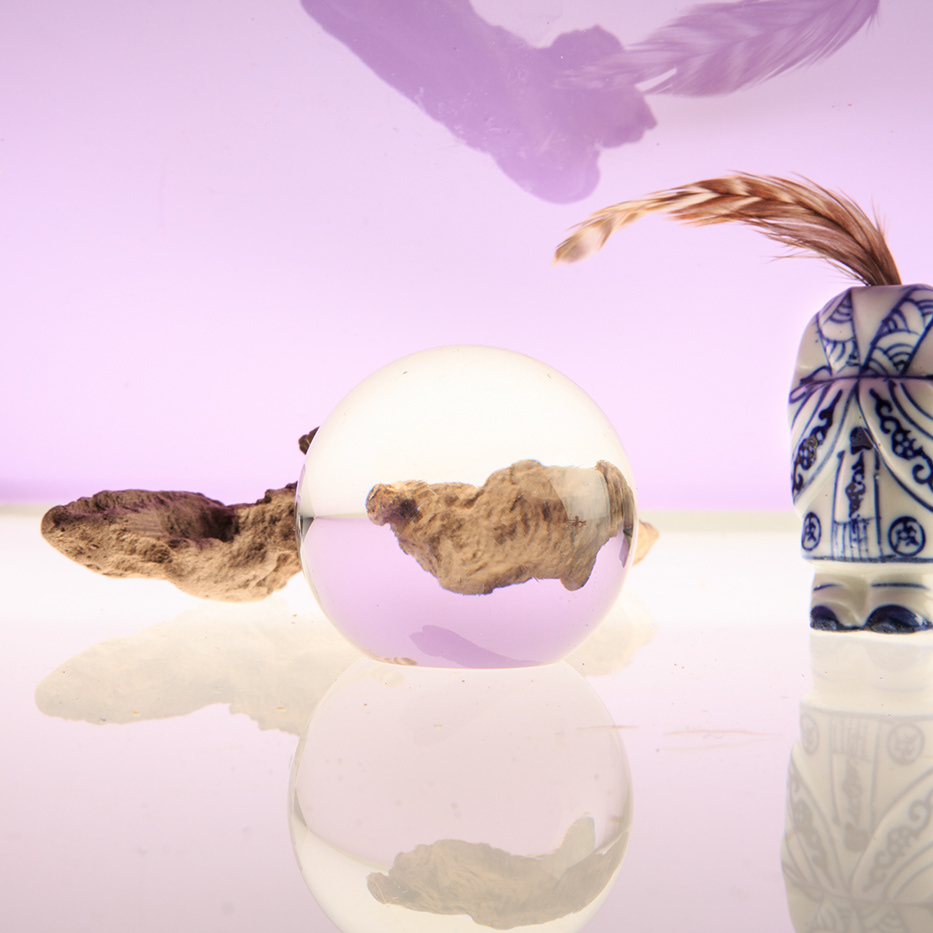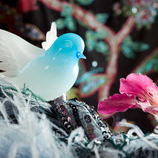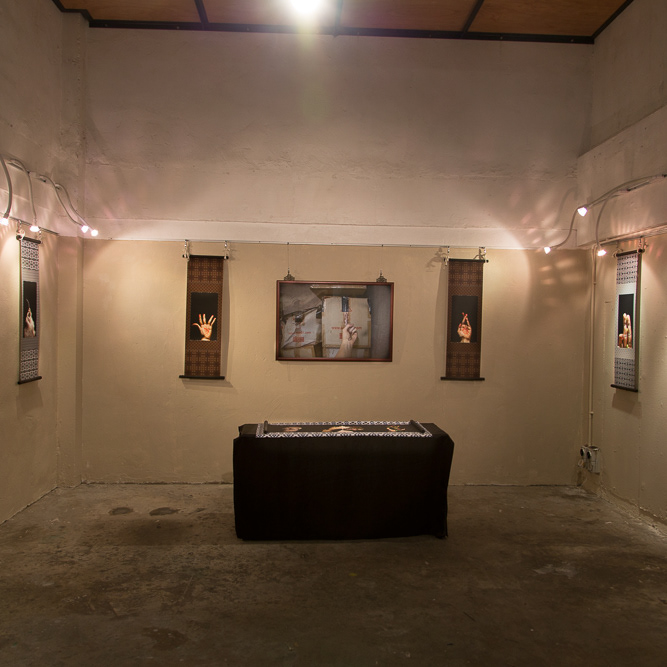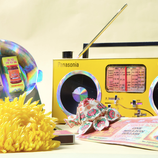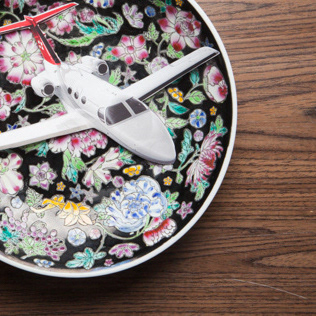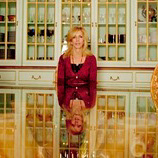Artist statement
The subject of “Natural Selection”(2008-2011) is the mix of nature with mass-produced, sleek artifacts which replicate nature. I combined organic and synthetic elements in order to highlight the relationship between man-made objects and their attempts to emulate nature. It seems as though artists have always had a complex relationship with nature, as the French painter Gustave Courbet (1819-1877) describes it, “The beautiful is in nature, and it is encountered under the most diverse forms of reality. Once it is found it belongs to art, or rather to the artist who discovers it”(1870 approx.) . This decree connects the artists’ approach to nature to that of western culture in general. Since the industrial revolution or even before, mans’ relationship with nature is to use it and exploit it for his own needs.
I collect, sort and arrange the items intuitively, guided by color, texture, shimmer and transparency. The result is a hybrid world where objects from different sources coexist. Just like in classic Dutch still life paintings, the objects in my photographs present the wealth of the trader/merchants class, who, through their trade collected objects from around the world. These compact treasures offered their collectors a taste of riches and luxury from other cultures. My work grounds such collections in a post-modern context, where the visual boundaries between valuable artifact and mass produced imitation begin to blur. The philosopher Walter Benjamin writes in “The Work of Art in the Age of Mechanical Reproduction"(1938) about the change in perception of art caused by the having so many copies of an image. Likewise, the industrial reproduction of decorative artistic objects changes the way we value these objects. Once objects “made in China” were rare and exotic to the west. In today’s post-colonial world, these cheap objects are industrial imitations of what was once hand made only by the most talented of craftsman. Dutch Painters were concerned with vanitas - the decay of beauty, however in these works beauty is not threatened by its decay but ironically is saved for prosperity by their artificiality. These images stretch the border between fine taste and commercial kitsch. Highly saturated and overly detailed, they are designed to stimulate the senses, almost giving the impression that they are not only a visual spectacle, but a multi- sensual one.
As well as exploring issues of craftsmanship and authenticity these luxurious artifacts symbolize the duality and conflicting cultures. Through embracing my background and flamboyancy, while on the other hand, recognizing it’s faults and observing it with critique.
The subject of “Natural Selection”(2008-2011) is the mix of nature with mass-produced, sleek artifacts which replicate nature. I combined organic and synthetic elements in order to highlight the relationship between man-made objects and their attempts to emulate nature. It seems as though artists have always had a complex relationship with nature, as the French painter Gustave Courbet (1819-1877) describes it, “The beautiful is in nature, and it is encountered under the most diverse forms of reality. Once it is found it belongs to art, or rather to the artist who discovers it”(1870 approx.) . This decree connects the artists’ approach to nature to that of western culture in general. Since the industrial revolution or even before, mans’ relationship with nature is to use it and exploit it for his own needs.
I collect, sort and arrange the items intuitively, guided by color, texture, shimmer and transparency. The result is a hybrid world where objects from different sources coexist. Just like in classic Dutch still life paintings, the objects in my photographs present the wealth of the trader/merchants class, who, through their trade collected objects from around the world. These compact treasures offered their collectors a taste of riches and luxury from other cultures. My work grounds such collections in a post-modern context, where the visual boundaries between valuable artifact and mass produced imitation begin to blur. The philosopher Walter Benjamin writes in “The Work of Art in the Age of Mechanical Reproduction"(1938) about the change in perception of art caused by the having so many copies of an image. Likewise, the industrial reproduction of decorative artistic objects changes the way we value these objects. Once objects “made in China” were rare and exotic to the west. In today’s post-colonial world, these cheap objects are industrial imitations of what was once hand made only by the most talented of craftsman. Dutch Painters were concerned with vanitas - the decay of beauty, however in these works beauty is not threatened by its decay but ironically is saved for prosperity by their artificiality. These images stretch the border between fine taste and commercial kitsch. Highly saturated and overly detailed, they are designed to stimulate the senses, almost giving the impression that they are not only a visual spectacle, but a multi- sensual one.
As well as exploring issues of craftsmanship and authenticity these luxurious artifacts symbolize the duality and conflicting cultures. Through embracing my background and flamboyancy, while on the other hand, recognizing it’s faults and observing it with critique.
